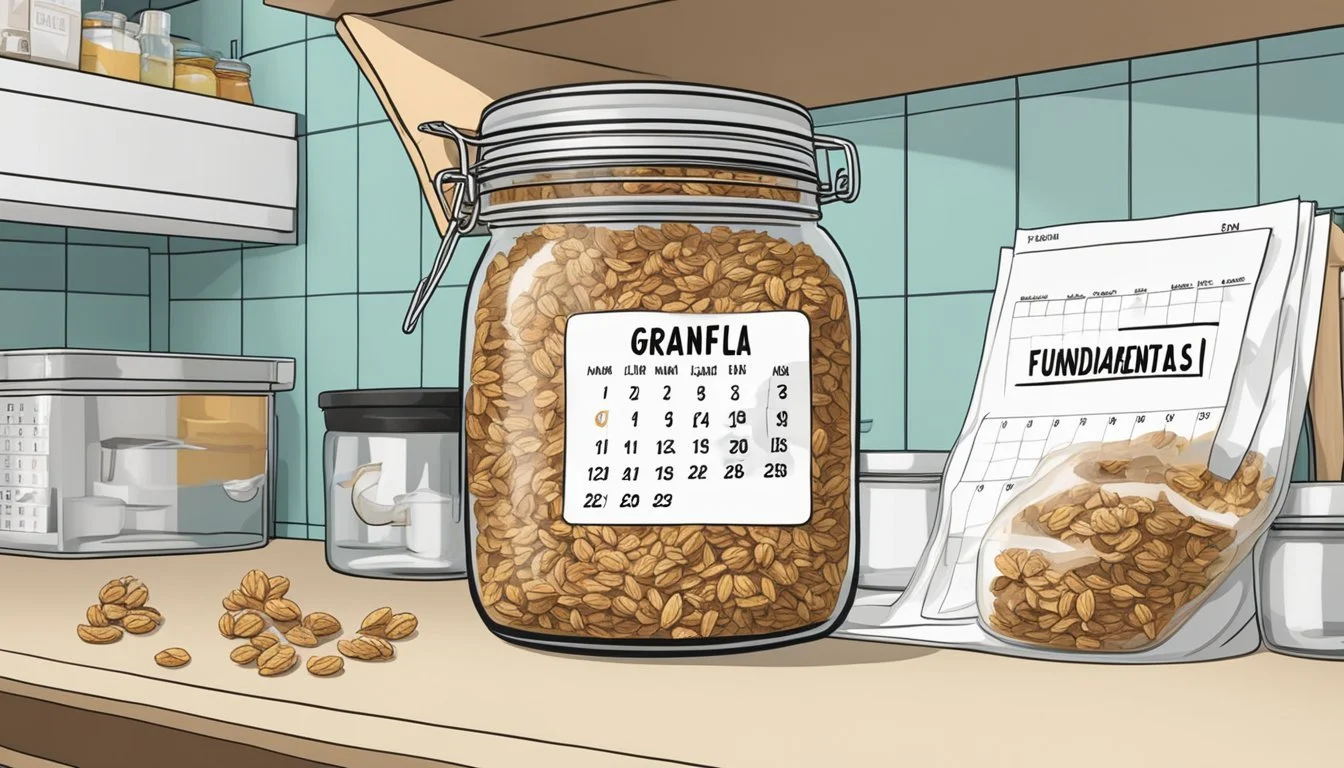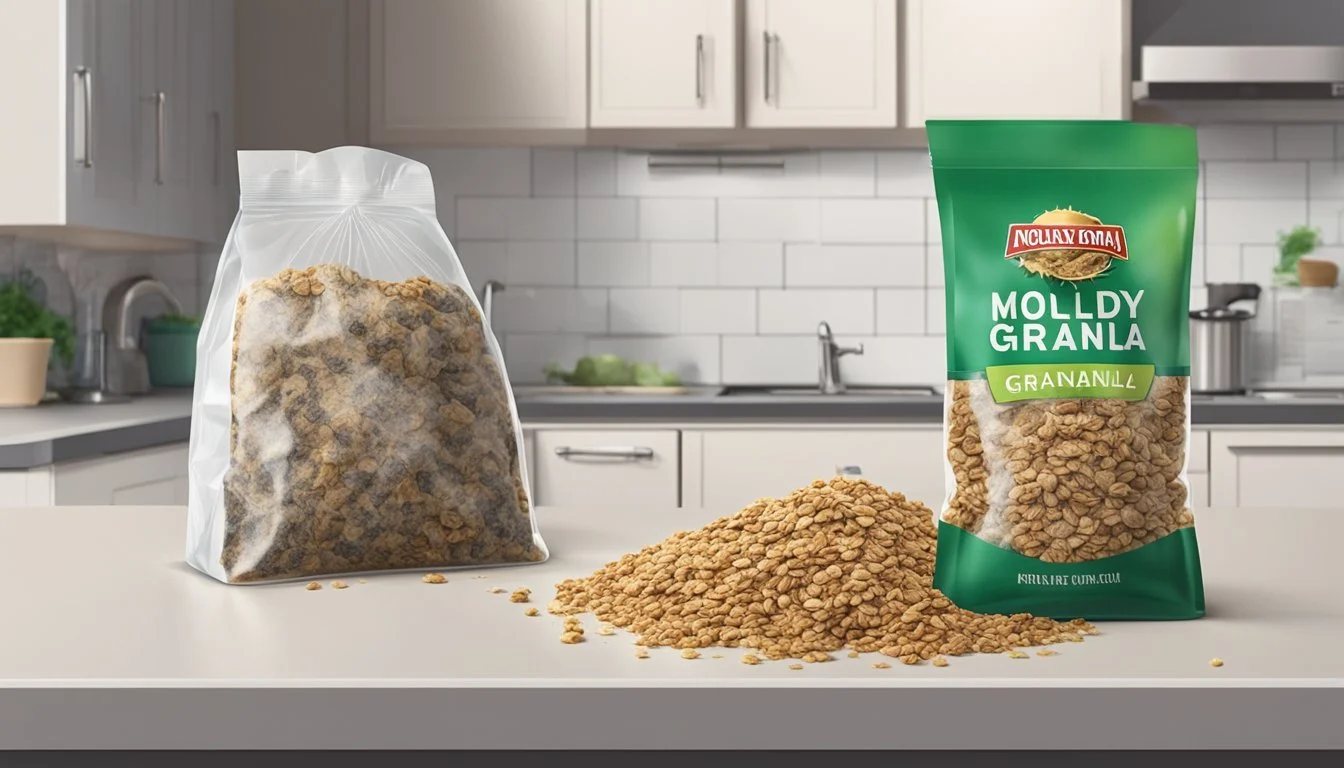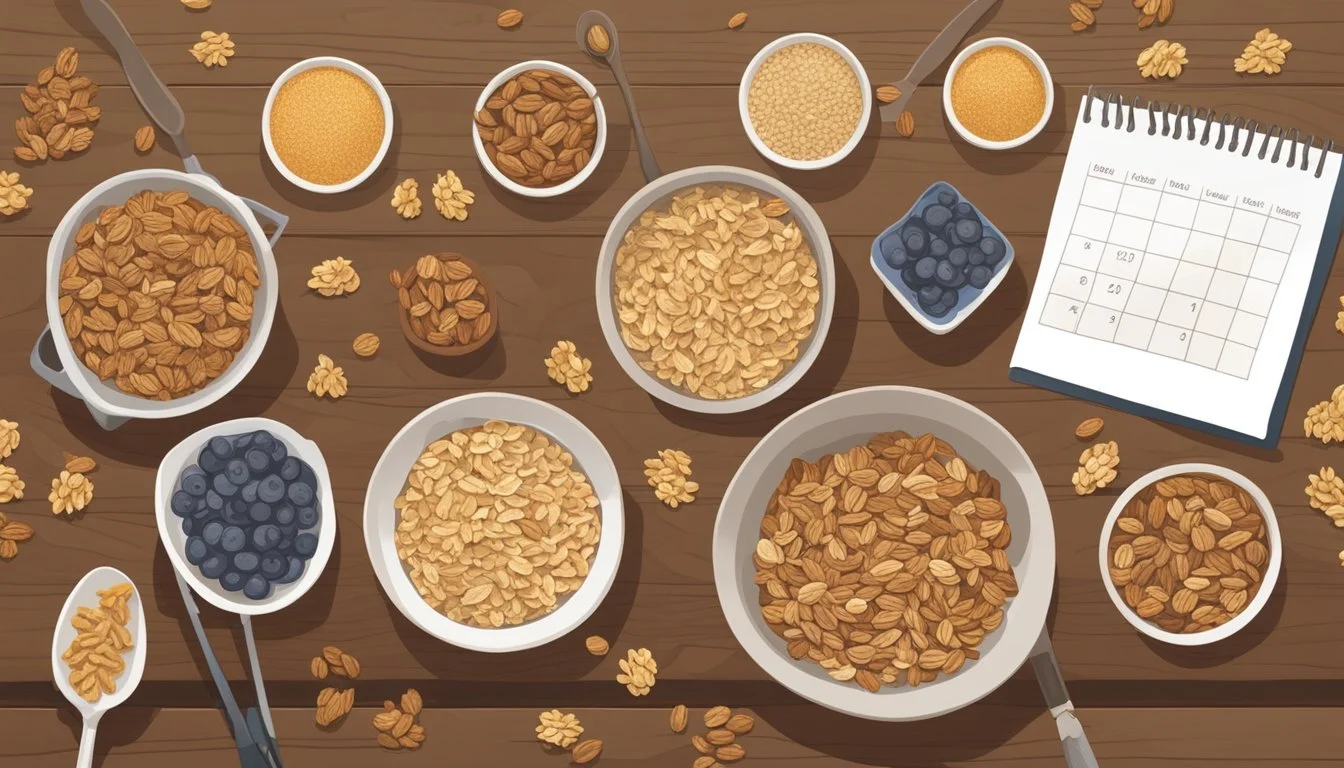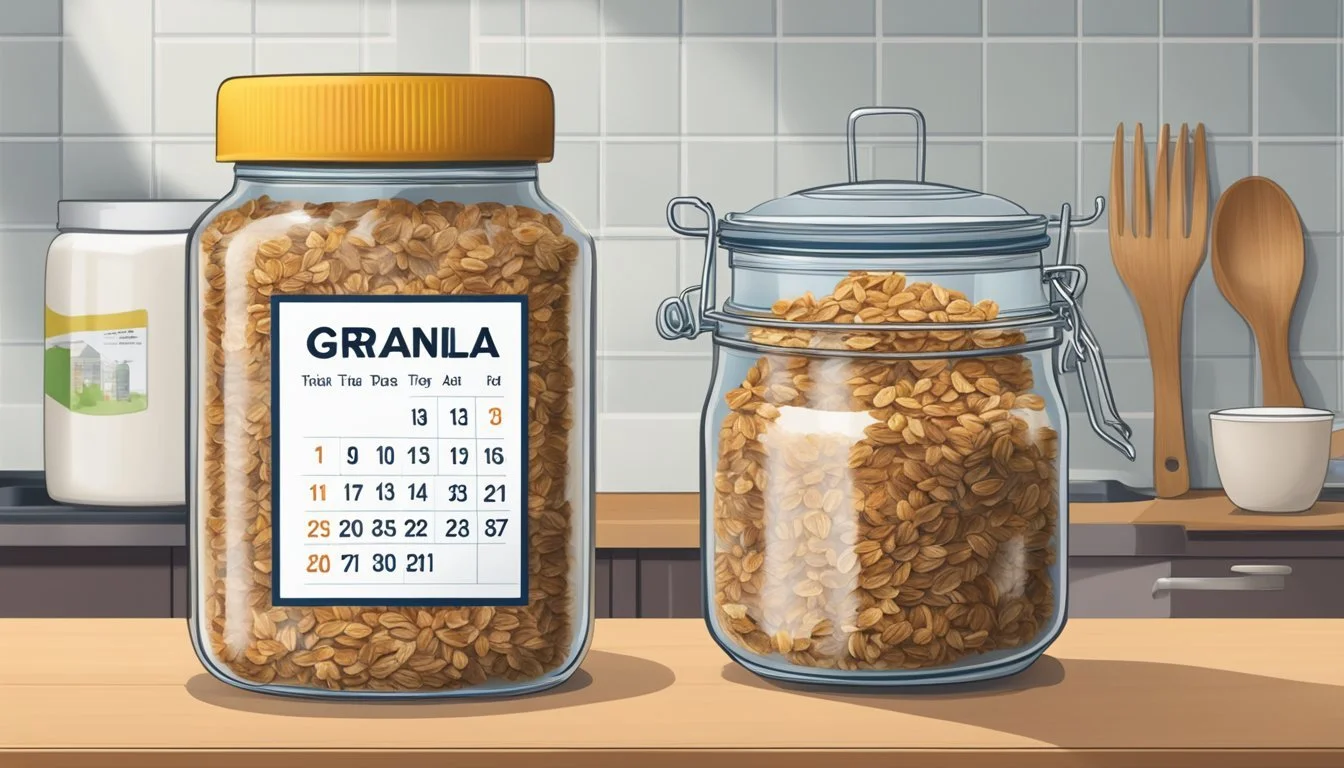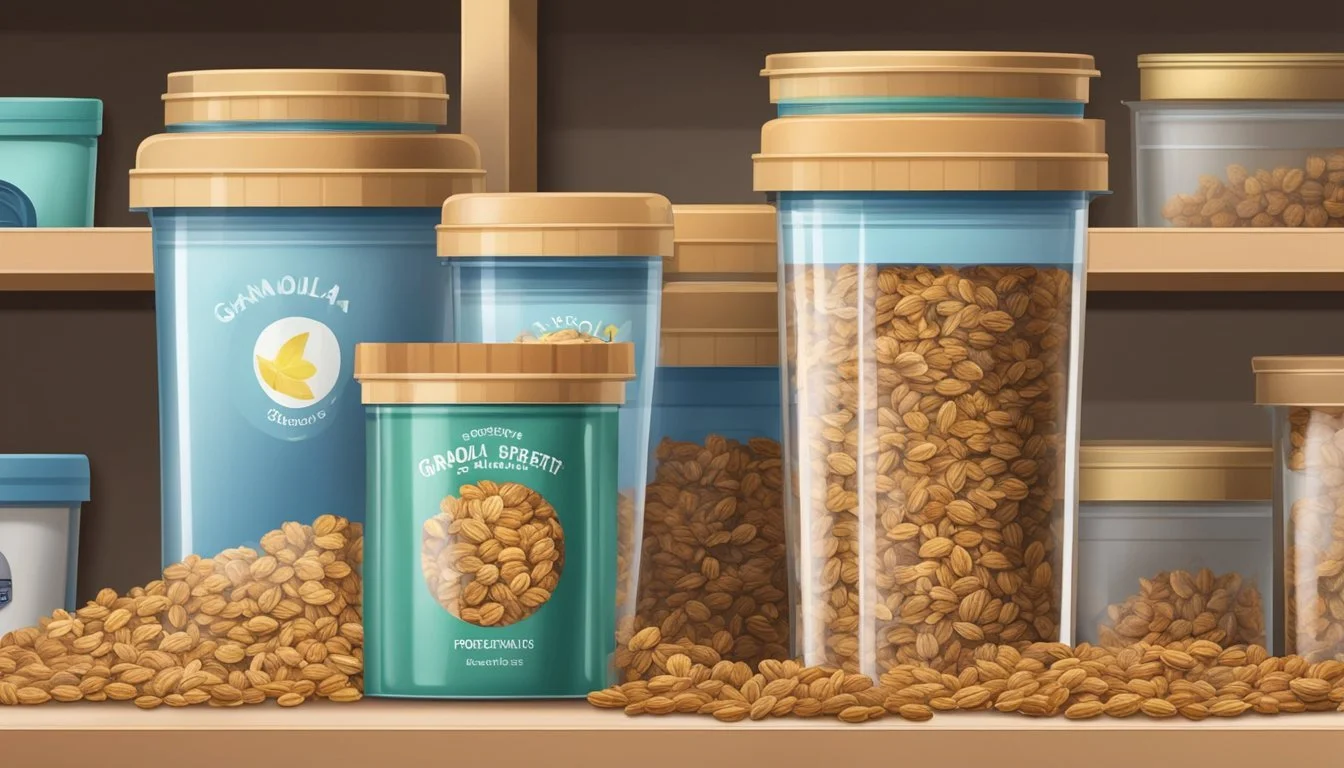How Long Does Granola Last?
Shelf Life and Storage Tips
Granola (how long does granola last?) is a popular breakfast and snack food known for its wholesome ingredients and crunchy texture. The shelf life of granola varies depending on a number of factors, including the presence of preservatives, the ingredients used, and how the granola is stored. Typically, store-bought granola that remains unopened can retain its quality for 6 to 12 months from the date on the label, which can extend beyond the "best by" date if kept in proper conditions.
Once opened, granola's shelf life is generally between 3 to 6 months, provided it is stored in a cool, dry place and in an air-tight container to prevent moisture and air from reducing its quality. In the case of homemade granola, which might not contain preservatives, it can last up to four weeks when stored correctly at room temperature. Vacuum-sealed granola can stay fresh for up to a year unopened; however, after breaking the seal, it's advised to consume it more quickly or freeze it to extend its shelf life.
Understanding Granola
Granola is a nutritious and versatile food product enjoyed by many for its taste and health benefits. It typically combines oats (how long do oats last?), nuts (how long do nuts last?), and sweeteners, and can be eaten plain or used as a topping.
Definition and Ingredients
Granola is a toasted mixture composed primarily of oats, which act as the base. It is often combined with a variety of nuts and seeds—such as almonds (how long do almonds last?), walnuts (how long do walnuts last?), and pumpkin seeds (how long do pumpkin seeds last?)—for added texture and nutritional value. To enhance the taste, sweeteners like honey (how long does honey last?) or maple syrup (how long does maple syrup last?) are incorporated. Dried fruits such as raisins (how long do raisins last?) or cranberries are common additions that contribute to the flavor profile and nutritional content. Occasionally, ingredients like chocolate chips (how long do chocolate chips last?) are included for a sweet twist.
Types of Granola
Different types of granola cater to a range of dietary preferences and nutritional needs. Some granola variations may focus on:
Protein-rich granola: Enhanced with a higher content of nuts and seeds.
Low-sugar granola: Reduced sweetener content or the use of sugar substitutes.
Gluten-free granola: Omitting common gluten sources and using gluten-free oats.
Vegan granola: Excluding honey and other animal-derived ingredients.
Commercial vs Homemade Granola
Granola bought from stores often has a shelf life of about 6 months, thanks to preservatives that extend its longevity.
Homemade granola usually lacks these preservatives, so its shelf life is shorter—typically lasting up to a month when stored at room temperature in an airtight container. It's important to ensure homemade granola is completely cool before sealing it to maintain its crunch and prevent moisture buildup.
Shelf Life Fundamentals
In examining granola shelf life, one must consider the factors that influence longevity and understand the typical duration a product remains fresh. Granola's durability varies significantly depending on storage methods and ingredient composition.
Factors Affecting Granola Shelf Life
Storage Conditions: Granola's shelf life is heavily reliant on how it is stored. It must be kept in a cool, dry place and away from direct sunlight to maximize freshness.
Humidity: High humidity can result in moisture absorption, leading to a stale or soggy texture, and potentially mold growth.
Temperature: Warmer environments can cause ingredients like nuts and fruits to spoil faster.
Air Exposure: Oxygen can cause oxidization of fats in nuts, leading to rancidity. An airtight container is ideal for storage.
Ingredient Quality: The shelf life of granola is also determined by the quality and type of ingredients used. Preservatives and additives can extend freshness, whereas natural, whole ingredients may shorten it.
Preservatives/Additives: Products with these components may last longer than those without.
Natural Oils: Granola with a high content of nuts or seeds, which contain natural oils, may expire faster.
Product Format: The distinction between homemade granola and store-bought varieties is crucial here, as commercially prepared granola typically contains preservatives that extend shelf life.
Typical Shelf Life Ranges
Store-Bought Granola: Generally boasts a longer shelf life due to preservatives and a controlled manufacturing process.
Unopened: Ranges from 6 to 12 months.
Opened: Best consumed within 1 to 4 months for optimal taste and texture.
Homemade Granola: Lacks the additives found in commercial products and thus, has a comparatively shorter shelf life.
Typically remains fresh for up to 2 weeks when stored in an airtight container.
Expiration and Best-By Dates: These are indicative of peak quality rather than safety, meaning granola can often be safely consumed beyond the best-by date if properly stored and not showing signs of spoilage.
Storing Granola
Proper storage of granola is essential to maintain its crunchiness and flavor. Knowing the optimal conditions and appropriate containers can significantly extend its shelf life.
Optimal Storage Conditions
Granola retains its quality best when stored in a cool, dark, and dry place such as a pantry. Exposure to heat, light, and moisture can lead to staleness and the growth of mold. For maximum freshness, one should consider placing granola in the refrigerator or freezer, especially if intending to keep it for an extended period. Refrigeration can preserve granola's freshness for up to 3 months, while freezing can extend its life for up to 6 months. It’s important to be mindful of pantry pests; a secure storage method reduces the risk of infestation.
Container Types for Storing Granola
Using the right type of container when storing granola is crucial to prevent moisture and pests from spoiling it.
Airtight Containers: Airtight containers such as mason jars or dedicated plastic storage containers with sealable lids are ideal.
Vacuum-Sealed Bags: For long-term storage, vacuum-sealed bags can be an effective option, as they remove air that can degrade quality over time.
Resealable Bags: If using resealable bags, ensuring the seal is closed tightly after each use can help retain the granola's texture and taste.
When transferring granola to these containers, make sure the granola is completely cool to avoid condensation that can lead to sogginess.
When it comes to getting the best deals, buying resealable bags online is the way to go!
Moisture and Temperature Control
Effective moisture and temperature control is essential for maximizing granola's longevity. By managing these environmental factors, one can significantly reduce the risk of spoilage and retain granola's optimal freshness and taste.
Temperature's Impact on Granola Lifespan
Heat can accelerate the degradation of granola, reducing its lifespan. Storing granola at room temperature, generally around 68°F to 72°F (20°C to 22°C), is ideal. Exposure to higher temperatures, especially in conjunction with humidity, can lead to the granola becoming stale or rancid. It is important to avoid storage areas that may fluctuate in temperature, such as near cooking appliances, or in direct sunlight, as these conditions can also negatively affect the granola's quality.
Moisture's Impact on Granola
Moisture is one of the main contributors to decreased shelf life in granola. Once granola is exposed to moisture or a humid environment, it becomes susceptible to molding and loss of crispness. To combat this, granola should be stored in airtight containers that keep out moisture. This will help maintain its crunchiness and flavor. Silica gel packets can be added to containers to absorb any excess moisture, providing an additional layer of protection against humidity.
Freezing Granola
Freezing granola can significantly extend its shelf life, maintaining its crunchiness and flavor. Here is how one can freeze granola and subsequently thaw it when ready to enjoy.
How and Why to Freeze Granola
Freezing granola is a practical method to preserve its quality over months. Once the granola has cooled completely, it can be divided into portions or left whole for freezing. Here's a step-by-step guide:
Cool down the granola completely to avoid moisture buildup.
Package the granola in airtight containers or zip-lock freezer bags to prevent freezer burn.
Remove as much air as possible from the bags to keep the granola dry.
Label the packages with the date so you can keep track of how long they've been stored.
Place the packaged granola in the freezer, where it can last between 3 to 6 months.
Freezing avoids spoilage and ensures that granola retains its texture and taste until one is ready to use it.
Thawing Frozen Granola
Thawing granola is just as important as freezing it properly to ensure the best outcome. When one decides to consume the frozen granola, here's what should be done:
Transfer the desired amount of granola from the freezer to the refrigerator and let it thaw overnight.
For a quicker option, granola can be spread out on a baking sheet and left at room temperature for a few hours.
Once thawed, the granola should be consumed within a week for the best quality.
It's crucial not to refreeze granola after it has been thawed to prevent moisture accumulation and quality degradation.
By following these simple thawing steps, the granola will be ready to enjoy as if it were freshly made.
Signs of Spoilage
When inspecting granola for spoilage, one must look for distinct signs that indicate the product has gone bad, such as rancidity and the presence of mold or bacterial growth.
Identifying Rancidity
Rancidity occurs when the fats and oils in granola oxidize, leading to an off-putting smell and taste. Granola that has become rancid will often have a noticeably sharp, bitter odor and will taste unpleasant. It may also feel soggy or lose its natural crunch due to the oils breaking down over time.
Mold and Bacterial Growth
The presence of mold or fungi on granola indicates significant spoilage. Visible signs include fuzzy or spotty growths on the surface, which can appear in a variety of colors such as white, green, or black. Bacterial growth, while not always visible, can produce a sour smell or cause the granola to clump together. Eating moldy or bacteria-laden granola can lead to foodborne illness, so it should be discarded immediately upon detection.
Maintaining Quality and Freshness
Proper storage methods are crucial for maximizing the shelf life of granola, ensuring that its freshness, texture, and taste remain of quality.
Tips for Prolonged Freshness
Storage Containers: Granola should be stored in an airtight container or bag to keep out moisture and preserve its crisp texture. This storage method also helps protect the flavor and prevents staleness.
Temperature and Environment: A cool, dry place away from direct sunlight and heat will help maintain the shelf-stable nature of granola. Ideally, the temperature should be between 60°F (15°C) and 70°F (21°C).
Freezing for Longevity: For extended storage, granola may be kept in the freezer, correctly sealed. Freezing can prolong the shelf life up to six months without compromising taste and texture.
When to Dispose of Granola
Sensory Checks: If the texture of the granola has softened and it no longer has a crisp bite, it's a sign to consider disposing of it. Any off-smell or taste also indicates that the granola is past its prime.
Visual Inspection: The presence of mold or any other visual spoilage clearly means the granola should not be consumed.
By adhering to these guidelines, one can enjoy granola in its best form for as long as possible.
Granola in Various Forms
Granola, a versatile and nutritious food, is available in many forms. Each form has a distinct shelf life influenced by its ingredients and storage conditions.
Granola Bars
Granola bars (how long do granola bars last?) are a convenient, on-the-go version of granola. Usually, these bars have a shelf life of around 6 to 8 months when stored in a cool, dry place. After opening, it is advisable to consume them within 1 month to maintain freshness and taste. Commercial granola bars often contain preservatives that extend their shelf life compared to homemade versions.
Storage Tips:
Keep granola bars in their original packaging until use.
Store in an airtight container after opening to prevent staleness.
Common Ingredients:
Oats
Honey or other sweeteners
Dried fruits
Nuts and seeds
Granola with Add-ins
Granola mixed with various add-ins such as yogurt, milk, fruits, or chocolate can affect shelf life. Typically, granola with add-ins should be consumed more quickly, especially if it includes fresh ingredients.
Shelf Life with Different Add-ins:
With Yogurt or Milk: Best eaten immediately or stored in the refrigerator for a maximum of 2 days.
With Fruits: Dried fruits can extend granola's shelf life, whereas fresh fruits should be eaten within 1 to 2 days.
With Nuts and Seeds: These add-ins generally do not reduce the shelf life of granola, unless they are fresh and contain high amounts of oils that can go rancid.
With Sweeteners: Granola that contains honey, syrup, or other sweeteners can sometimes have a longer shelf life due to their preservative properties.
Storage Tips:
Consume granola with fresh add-ins quickly.
Store in the refrigerator when mixed with perishable items like yogurt or fresh fruits.
Health and Nutrition Considerations
When considering the consumption of granola, two main factors to examine are its nutritional value and the potential health risks associated with consuming spoiled granola. These aspects are crucial for a comprehensive understanding of granola as a food product.
Nutritional Value of Granola
Granola is celebrated for its healthy snack profile, typically made from a mixture of oatmeal, nuts, seeds, and sweeteners like honey or brown sugar. It often serves as a good source of protein and fiber, aiding in satiety and digestion. Moreover, granola can include various vitamins and minerals, which contribute to a balanced diet.
Nutrient Benefits Protein Contributes to muscle repair and growth Fiber Improves digestive health Vitamins Supports overall body functions Minerals Strengthens bones and immune system
However, it can sometimes be high in excess sugars and fats, depending on the brand and type, which may reduce its health benefits if consumed in large quantities.
Potential Health Risks with Spoiled Granola
The consumption of spoiled granola can lead to foodborne illnesses, characterized by symptoms like nausea, vomiting, and diarrhea. It is important to note that the "best by" or "use by" date is a quality indicator, yet an abrupt change in these dates does not instantly affect the product's safety. Unopened granola typically retains its quality for 3 to 6 months past the date on the label, and once opened, it's best consumed within the same time frame if stored properly. Refrigeration can help maintain its texture and guard against spoilage.
Sign of Spoilage Action to Take Odd smell Discard the granola Unusual taste Stop eating and discard the product Visible mold Discard the entire product
It’s crucial to store granola in a cool, dry place and ensure the package is sealed after opening to reduce the risk of spoilage.
Labelling and Expiration Tracking
In the context of granola, labeling accurately communicates the product's shelf life and expiration date—crucial details for consumers to determine freshness and quality. Manufacturers often establish these dates based on rigorous testing and food safety standards.
Reading and Understanding Labels
When consumers inspect a package of granola, they should look for the "Best By," "Use By," or "Sell By" date. These terms can vary, but typically:
Best By indicates when the product will be at its peak freshness.
Use By is the last date recommended for the consumer to use the product while at peak quality.
Sell By is more for retailers to manage inventory, signaling when a product should leave the shelves.
It's important to note that these dates are not safety dates but rather the manufacturer's estimate of how long the granola will maintain optimal quality.
Calculating Expiration from Production Date
Sometimes, only the production date is available on the granola packaging. To calculate the expiration:
Identify the Production Date: Look for a printed date often coded in Julian format or a straightforward date.
Refer to Shelf Life: Based on the search results, unopened granola typically has a shelf life of 6 months. Consider the shortest shelf-life ingredient as a determinant.
Calculate the Expiration: Add the typical shelf life to the production date to estimate the expiration date.
Keep in mind that the presence of preservatives and the specifics of the storage conditions can extend or shorten these general timelines.
Avoiding and Dealing with Pests
Keeping granola fresh involves not only proper storage to maintain its quality but also measures to prevent and respond to pest infestations. Pests can degrade the granola's quality and make it unsafe for consumption.
Prevention of Pantry Pests
The best way to handle pantry pests is to prevent them from becoming an issue in the first place. Storing granola properly is critical:
Store in airtight containers: Containers with tight-fitting lids will keep insects out.
Clean pantry regularly: Regular cleaning helps to remove food particles that may attract pests.
Check for pests often: Inspect your pantry regularly for any signs of pests.
Purchase in small quantities: This reduces the likelihood of granola sitting unused long enough to attract pests.
Response to Infestation
Should one discover an infestation of pantry bugs or insects, immediate action is required:
Remove all food items: Inspect each one carefully for signs of pests. This includes obvious bugs or larvae and subtle signs like webbing or holes in packaging.
Clean the pantry thoroughly: Use a vacuum to remove any pests and wipe down all surfaces with a strong cleaning solution.
Discard infested food: Any contaminated granola or other food must be thrown out immediately to prevent the spread of the infestation.
Store new granola properly: After addressing the infestation, ensure new granola is stored in airtight containers to prevent a recurrence.
By following these measures, one can maintain a pest-free environment for granola storage in pantries or cabinets, ensuring longevity and quality of the food.
Best Practices for Homemade Granola
For homemade granola to maintain its quality and freshness, certain storage techniques are recommended. Improperly stored granola can lead to reduced crunch, flavor loss, or spoilage prematurely. Below are specific ways to store homemade granola properly and the outcomes of not following these guidelines.
Recommended Storage Techniques
Cooling: Homemade granola should be allowed to cool completely to room temperature before storing. Heat can cause condensation, leading to sogginess.
Air-tight Containers: Store granola in air-tight containers such as mason jars or heavy-duty Ziploc bags to protect from moisture and pests.
Refrigeration or Freezing: To extend the shelf life, one may refrigerate granola for up to two months or freeze it for up to six months.
Adding Binders and Spices: Using the right amount of binders, like honey or maple syrup, helps maintain granola clusters while spices can preserve freshness with their anti-inflammatory properties.
If you're looking for mason jars buying it online is your best bet!
Outcome of Improper Storage
Granola becomes stale: Moisture and air exposure can strip away the crispness, causing it to become soft and chewy.
Flavor degradation: Spices and flavors can diminish over time if the granola is not stored in a cool, dry place.
Contamination risk: Without a proper seal, granola is prone to infestation by pests or mold growth in the presence of moisture.
Adhering to these storage recommendations helps ensure that homemade granola retains its desired taste and texture for a longer period.



